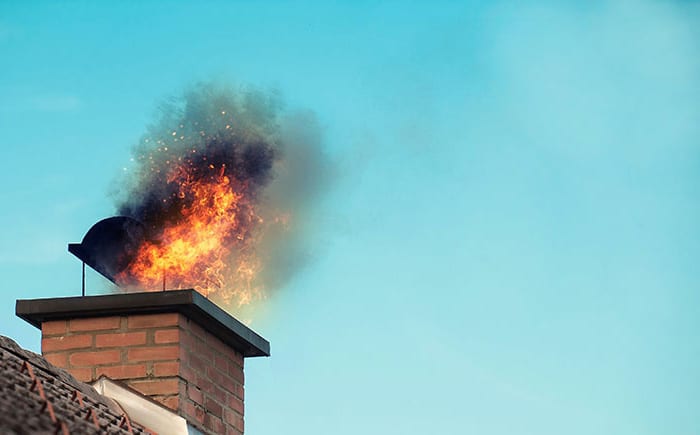Chimney Cleaning and a Tragic Story

Many house hunters have a fireplace on their wish list, and for good reason. Fireplaces provide warmth and a beautiful architectural feature, but they can also be a source of danger. Taking care of your fireplace is important part of home maintenance for ongoing enjoyment and safety, but how often should a chimney be cleaned, and what wood should you use in a fireplace? The BrickKicker is here to help.
How Often Should a Chimney Be Cleaned?
The frequency at which you clean you chimney will depend on a couple of factors, including:
- How often you use it
- What kind of wood you use
- The condition of your chimney’s interior
Burning wood produces smoke and creosote. What is creosote? Creosote is a resin from the wood that is extremely flammable and toxic. As wood burns, creosote is released in the smoke and travels upward, often solidifying near the top of your chimney. Once cooled, it hardens into a tar-like substance and can continue to build up and obstruct proper ventilation.
It does not take much buildup to cause a fire. This is one of the reasons why we bring in professional chimney sweeps to keep our chimneys clean. Homeowners should schedule an annual chimney inspection to assess its conditions, especially before winter, and those results will determine how often your chimney should be cleaned.
Inspectors will look for the following factors:
- What woods are you burning? Soft woods will create more creosote than harder woods and therefore require more frequent cleaning.
- How often are fires burned fires and how much is burned? Professional chimney sweeps recommend cleaning a chimney every time a face cord of wood is burned. A face cord is typically the measurement of one truckload of wood or about 8 feet long X 4 feet high X one stick of wood.
- What does the interior of the chimney looks like? If you looked up your chimney you will see that the smoke has turned the inside of the chimney black. After a few fires this black will begin to build up and create a tar. This tar is glossy. Shining a light and seeing the reflection on the tar is a sure sign of the creosote build up.
What Wood Should You Use in a Fireplace?
We recommended using harder woods in your fireplace, because they create less creosote. Some examples of popular hard woods include:
- Oak
- Walnut
- Maple
- Cherry
- Birch
Softer woods may burn more easily but they also create more ash and have more sap pockets that can cause unwanted sizzling and snapping, potentially throwing embers beyond the fireplace hearth. Soft woods such as fir and pine should be avoided if possible to cut down on creosote and additional safety risks.
Here are some more factors to consider when choosing what wood to use in your fireplace:
- Seasoned wood produces more heat and burns cleaner.
- Never burn painted or treated wood as it will release harmful chemicals.
- Store wood in a well-ventilated area.
- Start small and build up your fire slowly, only using as much wood as you need.
What Happens If You Don’t Clean Your Chimney?
Chimney fires are a real thing. They are devastating to everyone involved. Here is a link to a recent video produced by Rachael Ray. Her home recently was lost to a chimney fire.
If you have more questions about what is creosote or how often should a chimney be cleaned, contact The BrickKicker. We can help inspect your chimney and ensure it’s safe and ready for use. Contact us to schedule an inspection.